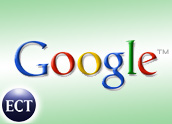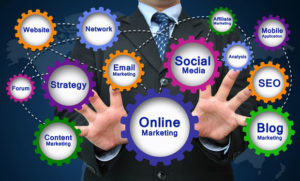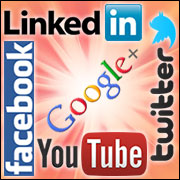
Automatic audio ads that co-opt the user’s speakers to automatically play sounds and music are often intrusive and annoying and can even disrupt the workplace. The oft-cursed technique begs the question of whether advertisers can actually sell goods to a startled audience left leaping from their chairs and desperately seeking the mute button.
“Automatic audio ads are failing miserably,” Jean-Pierre Khoueiri, CEO of Internet advertising and search engine optimization specialists Constant Click, told the E-Commerce Times.
The Ad Alarm
“People surf the Web, typically opening up multiple tabs on the Web browser waiting for the sites to load, and suddenly an ad will start blaring through the speakers, and the user won’t know where it’s coming from,” explains Khoueiri. “They have to check all of their open windows to figure it out, and once they do find it, the most likely reaction is to close the window — not buy the product.”
Advertisers are learning a painful lesson through consumer rebukes. “I believe it is self-defeating. I’ve used automatic audio ads on several of my Web sites, and found that the cost of alienating my traffic was far higher than any potential conversion increase,” Marty M. Fahncke, president of FawnKey & Associates, a marketing consulting firm specializing in e-commerce and electronic marketing, told the E-Commerce Times.
The Curse of Unrelated Sound Effects
It isn’t only the “gotcha” scare that turns unsuspecting users off to audio ads; it is a combination of poor taste, bad timing and terrible tact. “Ads are generally off topic and often poorly made,” says Khoueiri. “Cnet News is one example. It is famous for serving unrelated video/audio ads.”
“If users type in the keyword ‘socks’ into Google, and they end up at a site that sells socks, they shouldn’t hear an audio ad about cars,” says Khoueiri. “That is intrusive, but if the ad where about running shoes or socks or anything relevant, the ad may get through to some listeners.”
Indeed, the few automatic audio ads that are making headway with consumers are gracefully matched to the topic being searched. “Some subtle or very relevant sounds, such as those used by Aflac, can be fun,” David Goebel, vice president of Internet marketing at liQuidprint, told the E-Commerce Times.
The Quack Tact
Insurance giant Aflac uses automatic audio to augment its larger advertising campaign. “As part of our ‘Can Your Insurance Do This?’ campaign, we challenged Ogilvy Interactive to create online elements that would integrate with our television and print creative and would encourage people to interact with our brand online,” Cosh Bryan, Web producer in marketing services at Aflac, told the E-Commerce Times. “We have a very fun and engaging brand, so it was only natural that we use sound to bring everything together.”
On Aflac’s site, the now-famous Aflac duck sounds off only to underscore the company’s overall message. “Sounds were something we were able to use all the way through the campaign; from our online ads to our landing page,” says Bryan. “The clicking of lights on and off, the munching of a goat and the sound of groceries bouncing off a bag helped us reinforce the benefits of Aflac.”
The main difference in consumer reaction to Aflac’s audio ads and the general batch of automatic audio ads is that the sounds are tied to what the user is doing and are therefore both relevant and somewhat expected. “The Web is user driven and disruptive audio ads take away the user’s control,” Ani Luxner Matson, interactive marketing consultant at Digital Marketing Strategies, told the E-Commerce Times.
From Loud to Roll-Over
“Web experience is an interaction between one person and the computer. Automatic audio ads bring other people and noise to the equation and that’s why they are ultimately unsuccessful,” explains Matson.
Indeed, user control seems to be the biggest factor in user acceptance of audio ads. “When I switched to user-activated audio, with a clear invitation to compel the user to activate it, my conversions increased, and the duration people spent on the page increased,” says Fahncke, who gave as an example the site ThisBookIsGreat.com.
The more effective ads are not automatic, but instead give the user an audio option. “User acceptance is much higher when you show an audio option that can be activated by clicking on it or rolling over,” says Matson. Air Force Predator and Blue Cross Blue Shield are the examples Matson cited as successful implementers of this technique.
Fahncke says there are three offensive elements in most automatic audio ads:
- Not offering a clear and easy way for the visitor to mute or turn off the audio right away
- Setting the playback volume too high so that it blasts the sound, shocking or scaring the visitor
- Having a low-quality, amateur recording
The Jump Seat View
Although automatic audio ads are too new a trend to have any meaningful industry stats, at the moment, advertisers and marketing experts are finding out first hand what works and what doesn’t. “I’ve done extensive study on this topic, with a variety of Web sites focused on both consumer and business traffic. In each and every case, my conversion rate has increased when I removed the instant audio, and made it user-activated instead,” declares Fahncke.
If further evidence is needed on the impact of automatic audio ads, just look around at your panicked coworkers. “Auto-launched audio ads send embarrassed users scrambling for volume controls,” says Matson.













































Social Media
See all Social Media